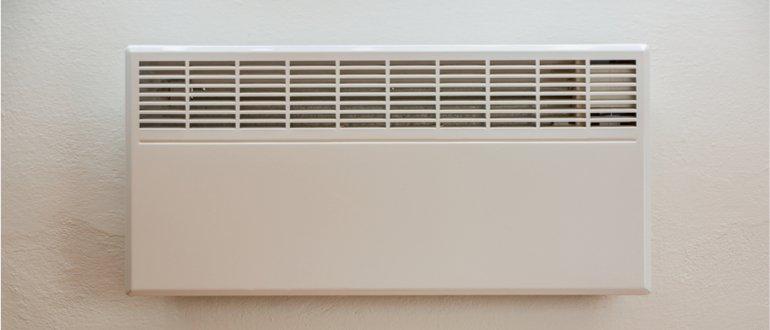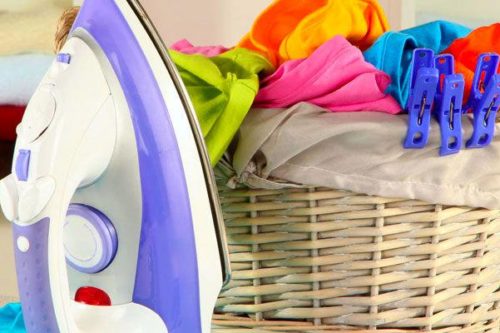Electric convectors are designed for heating all types of premises, but are most often used in living rooms or offices. A number of models are "sharpened" for use as an independent source of heat in country cottages. If you need a high-quality and reliable heater, you just have to figure out which convector-type heater to buy.
The best recommendations on how to choose an electric convector for a summer cottage, house or apartment correctly will be useful advice from our experts in the field of climate technology and, of course, feedback from the owners.
Content
Design features
Structurally, the electric convector is a rather simple device: a heating element is installed under the body. There are ventilation holes at the top and bottom of the device case, the heating element heats the air masses, according to the laws of physics, they rise up and go out through the grate, freeing up space for cold air. Thus, the room is heated by natural circulation or convection.
The device can serve as an additional or main heater. With a host of advantages, convectors have earned wide popularity among the population.
Advantages of convector-type heaters:
- Practicality - the built-in thermostat activates the heater as needed. The appliance switches on and off while maintaining a constant temperature.
- Even distribution of heat.
- Simple installation and easy installation - the electric convector can be installed on the floor or fixed to the wall. The installation method depends on the type of construction.
- The big advantage of this type of heater is safety. Unlike oil coolers, the maximum temperature of the device body during operation does not exceed 50-60 degrees.
- Functionality - manufacturers of convector heaters equip devices with a wide variety of options: temperature control, programming, ionization, remote control.
- The external design does not attract too much attention, most of the models are made in a restrained Hi-Tech style, but the user can order an individual design of the front of the case.
Among the disadvantages of electric convectors, noticeable noise can be noted during operation, but this applies only to some types. Electrical modifications are relatively economical, but completely mains dependent. On the contrary, gas ones are completely autonomous and are often used as an alternative to central heating, but they require maintenance - regular replacement of gas cylinders. If you are interested in this type of electrical appliance, we recommend that you familiarize yourself with rating of the best convectors in which we have selected the most economical and safe models.
How to choose the best convector
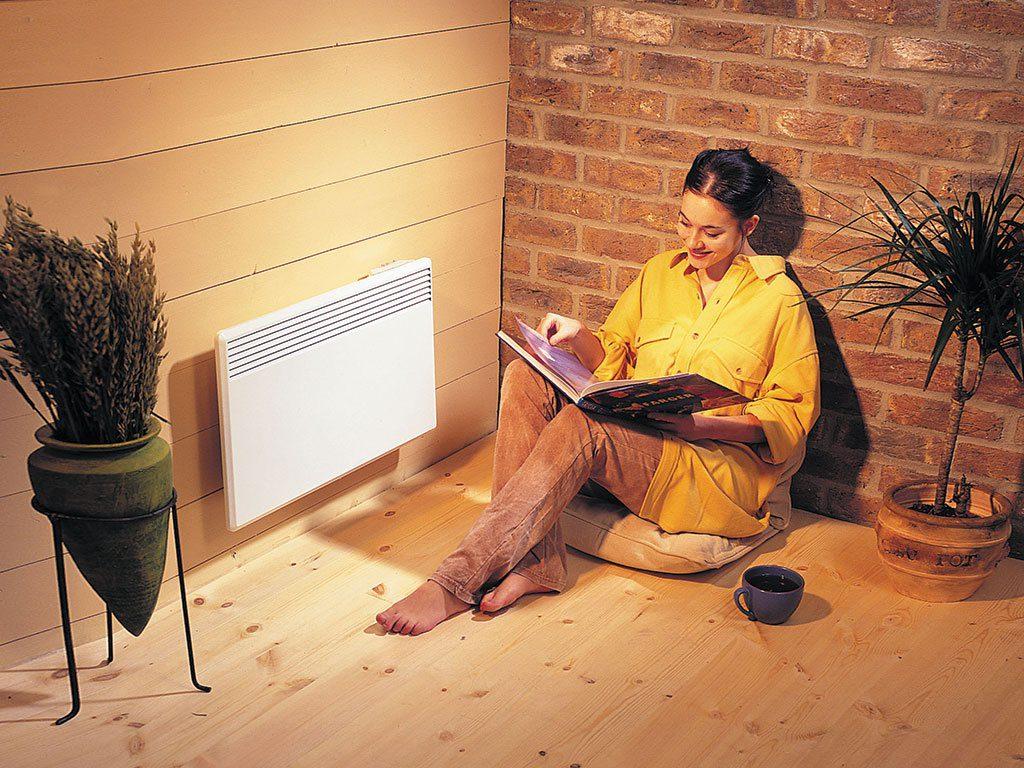
Moving on to the choice, you should focus on the type of room. The same convector model will not be equally effective for a nursery, bathroom and country house.
The second step in choosing a good electric convector will be to calculate the power relative to the area of the room. This is important if the device is too weak, the room will not be heated properly, or energy consumption will increase.
If there is a need to heat a bathroom or kitchen, the convector must be protected from moisture and splashes. For a bedroom or children's room, a convector heater with the lowest noise level is needed, users often write reviews on the Internet that this or that model causes discomfort at night. The living room is usually the largest. Here, the noise level rarely becomes a priority characteristic; appearance, option and the presence of an air ionizer will be much more important.
When an electric convector is the main source of heat in a country house, in addition to other characteristics, it must be equipped with an anti-freeze option. It is also worth looking at gas-fueled models, they do not depend on the availability of electricity.
Convector installation types
By the type of installation, heaters are: floor and wall. However, manufacturers strive to simplify the selection task as much as possible and are developing combined modifications of convector heaters with wall mounting and a set of legs and rollers included. However, combo versions may differ in the quality of fasteners and stands, so you should pay attention to this when choosing.
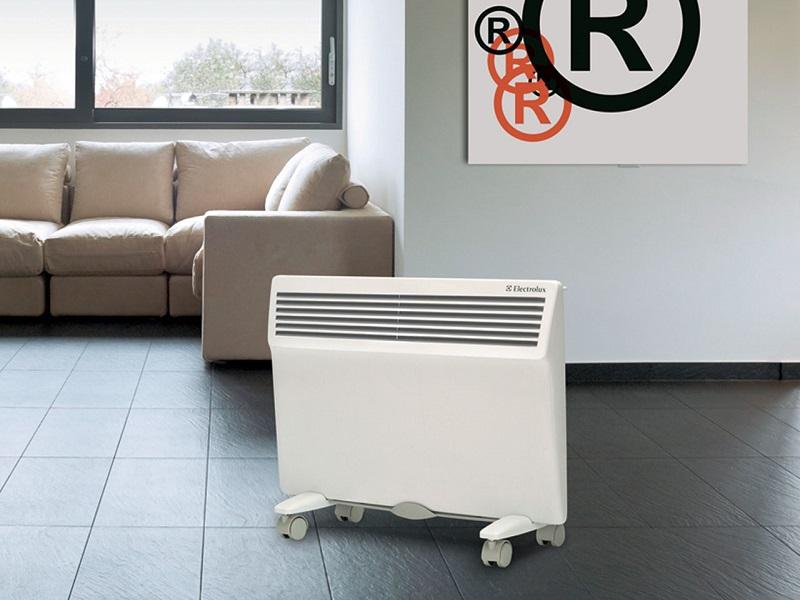
Floor-standing electric convectors are mobile, the device can be moved or transported from one room to another. Autonomy is an absolute plus, but a unit of this type requires a certain place for installation on the floor, and in small rooms it is simply inconvenient. It is rational to choose just such a model if installation to the wall is impossible, or the unit will be used in different houses - in an apartment and in a country house.
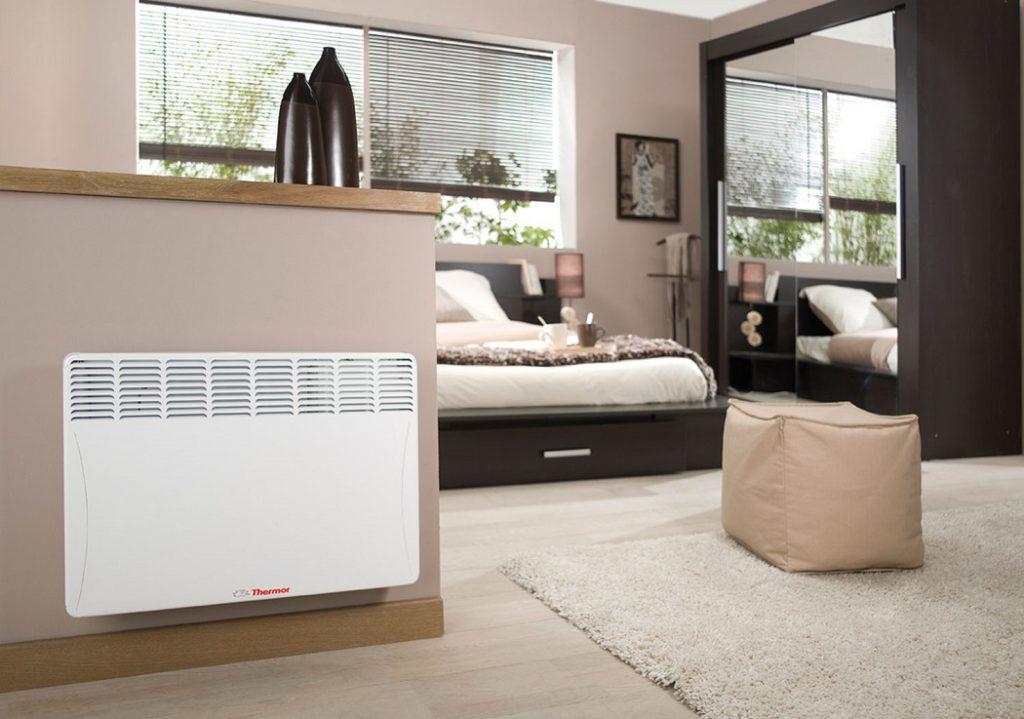
Wall mounted electric convectors do not take up space on the floor, which does not interfere with the user, pets and do not interest young children. The device can be mounted to a wall made of any material, with the exception of thin plasterboard or plywood partitions. Also, in accordance with the installation rules, it is allowed to install an electric convector under the window opening.
Power and its calculation
Power is a determining factor in electrical models. To choose a convector-type heater correctly, you need to make a power calculation, in accordance with the recommendations of the manufacturers. The formula for calculating the optimal value is quite simple: for every 10 sq. m requires 1 kW of power... However, these are only basic calculations for the area of a standard room, with a wall height of up to 2.7 m and high-quality insulation, in other words, for an apartment or a furnished cottage.
For efficient heating of rooms with high ceilings or when using a convector in a country house, where there is regular heat loss, the calculation result should be increased by 10%. Similarly, the result is increased if there is no interior decoration and the walls are made of concrete, if the glazing area is two or more times the size of the window. The correct calculation of the required power will be the key to the correct purchase.
Heating element type

The design of the heater significantly affects the choice of a high-quality heating convector - this characteristic determines what type of room the device can be used in. Today, models are produced with three types of heaters:
- monolithic element;
- tubular heating element;
- needle spiral.
Let's start with the best - monolithic (cast) heaters are the most durable, practical and relatively expensive. Such convectors are best chosen for use in the bedroom and children's room - they do not emit noise during operation.
Tubular heating elements - this is the "golden mean", where quality and high efficiency are well combined.However, it is optimal to choose a device of such a plan only for the living room, noticeable clicks during the heating and cooling of the heater create discomfort, which has been proven more than once by the reviews of the owners on the forums. Convectors with a tubular heating element are often designed for use in rooms with high humidity.
The last type is needle heater... Among the advantages of this layout is the lowest price on the market, among analogs. There are more disadvantages - relatively large dimensions, short service life, complete lack of protection from moisture. The purchase will be rational when the price is the determining factor, and the regularity of use is minimized.
Control
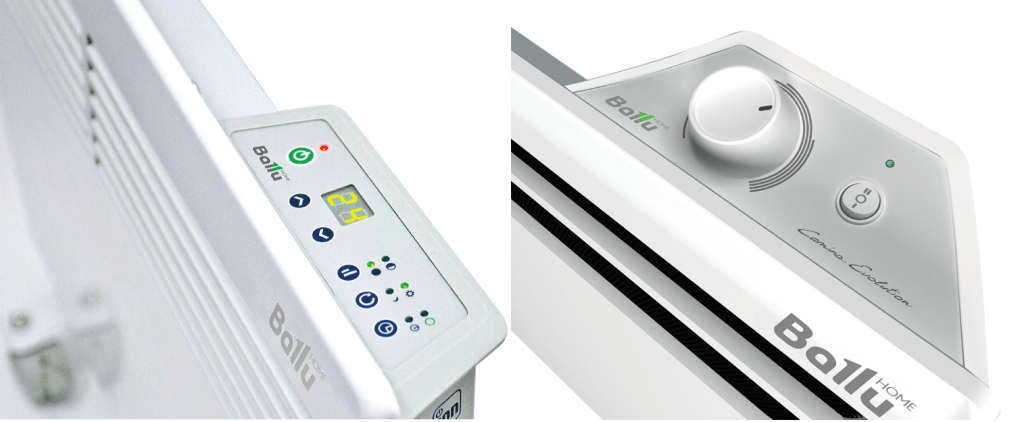
The control type is traditionally divided into mechanical and electronic. Which is better is a subjective question. The arrangement with a mechanical thermostat is more reliable, resistant to voltage drops, and easy to use. If the device is used by elderly people, the electronics will be out of place.
Convectors equipped with an electronic control unit are more functional. The main advantages of electronics are: the presence of a thermostat, the ability to program and set the temperature on days of the week, maximum heating accuracy, the presence of an informative display. However, this type of device is susceptible to severe voltage fluctuations, which can cause malfunctions.
Design and dimensions

The overwhelming majority of budget models and electric convectors of the mid-price category have a standard appearance: a metal body, painted in a basic color.
The middle segment (in terms of price and, accordingly, functionality) is more attractive and serves as an independent design element. Often the front panel of the heater is made of glass rather than metal - it looks very stylish.
Choosing a convector heater for an apartment or a cottage, the user can make an order for an individual design of the front panel.
The dimensions of the device play a role not so much aesthetic as practical. The parameter is to some extent predetermined by technical characteristics: the type and power of the heater, the design. Electric convectors are usually flat and cover a relatively large area (like half a standard window). On the contrary, the floor-standing ones are represented by a wide selection of shapes, the most compact of which are skirting-type convector heaters with a height of only 15 cm.
Enclosure protection
The degree of protection of the convector heater from splashes and moisture plays an essential role when choosing a model for heating a shower, bathroom or kitchen. Manufacturers always indicate in the user manual whether the heater is protected from water. In the passport, the degree of protection is indicated according to generally accepted standards - in IP units.
When choosing a convector according to moisture protection parameters, you should focus on the minimum value at which the device can be operated in high humidity conditions - IP24. As an addition, a duplicate marking "moisture protection", "splash protection" is placed on the body.
Functions that might be useful
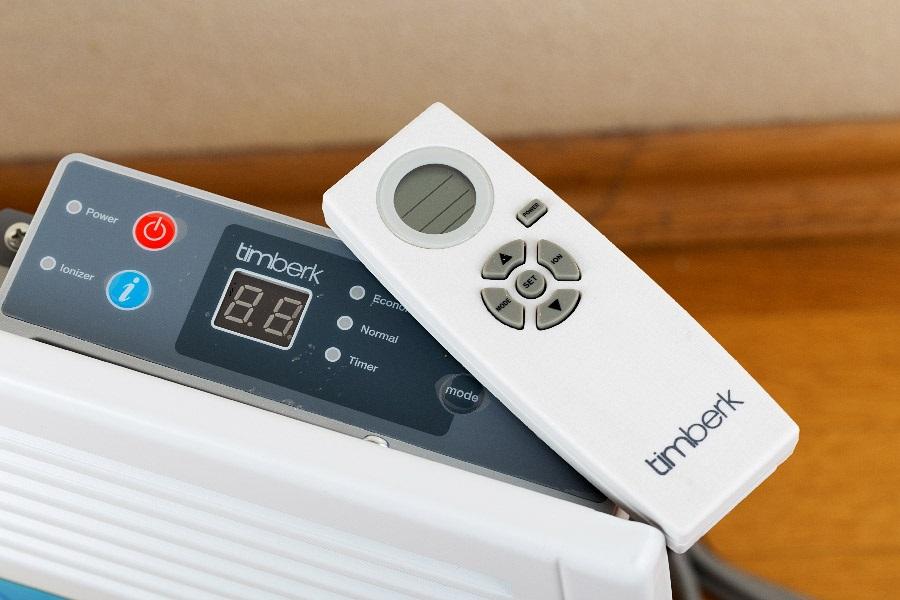
The functionality of convector heaters deserves special attention. Modern models have a number of useful options necessary for convenient and comfortable use.
Additional options for good convectors for heating houses and apartments:
- Built-in air ionizer. An ionizer is a type of air purifier that charges fine dirt and dust with negative ions, after which the suspension settles on the floor.
- Timer. Setting the exact operating mode will create maximum comfort in the home. It is necessary to choose a model with a timer when it is not possible to turn on and off the convector manually. In all the rest, the situation is that this option will not play a significant role, but will increase the comfort of use.
- Frost protection.This is an indispensable option for models used indoors without central heating in winter - for a summer house or a cottage. The essence of the function is as follows - when the air temperature drops below 5 degrees, the thermostat automatically activates the heater. The convector heats the room up to the set temperature, then switches off automatically. The cycle "on-off" is repeated.
- Overheating protection is a standard option for electric heaters. The protection system shuts down the device if the heater temperature reaches its peak values.
- Roll-over protection is useful for floor-standing convectors. The device should always be in an upright position, if the device falls down due to carelessness, the heating element turns off.
- Remote control is necessary if the device is fixed high or located far from the main place of stay of people. In addition, it is very convenient to operate the device from a distance.
Which manufacturer's convector to buy

When choosing a good model of a convector heater in terms of price-quality ratio, users often have the question of which brand to give preference to. Entrust your choice to a trusted company specializing in the production of HVAC equipment. You can purchase a device of an unknown brand only after a detailed study of the company and instructions for the technique. The lack of intelligible information about the manufacturer and the low information content of the passport are already a reason to categorically refuse to purchase. For this reason, we have selected 5 of the most popular and reliable manufacturing companies that have proven themselves excellent:
- Ballu
- Timberk
- Noirot
- Nobo
- Stiebel Eltron
Conclusion
In conclusion, we can conclude that the key criteria for the successful choice of an inexpensive but good convector will be the type of heater and its power. It is these factors that determine the efficiency and level of comfort during operation. Also, when choosing an electric convector for your home, you can pay attention to the built-in version. They have not gained wide popularity among individuals, but in some cases this arrangement will be the most successful solution.

